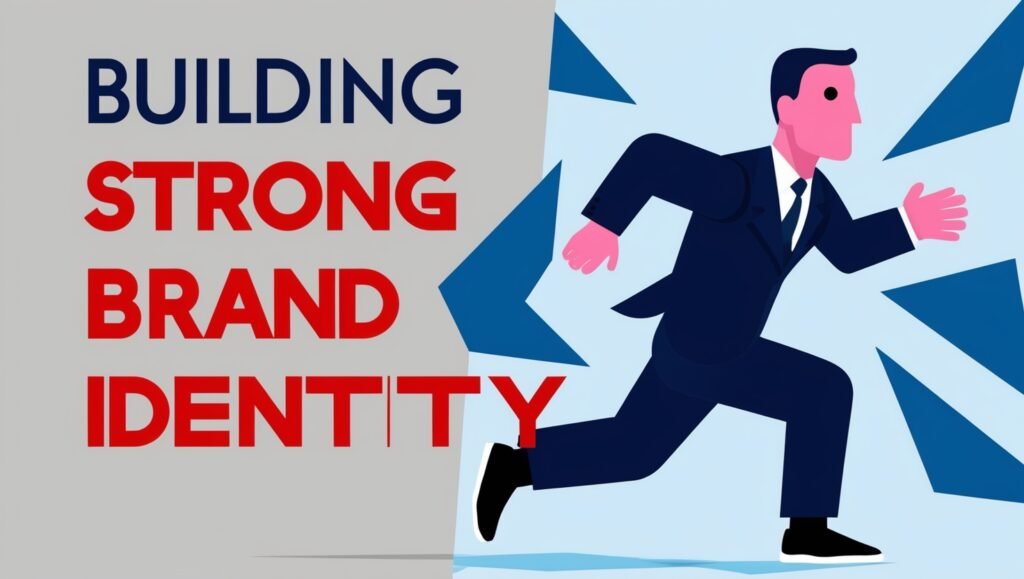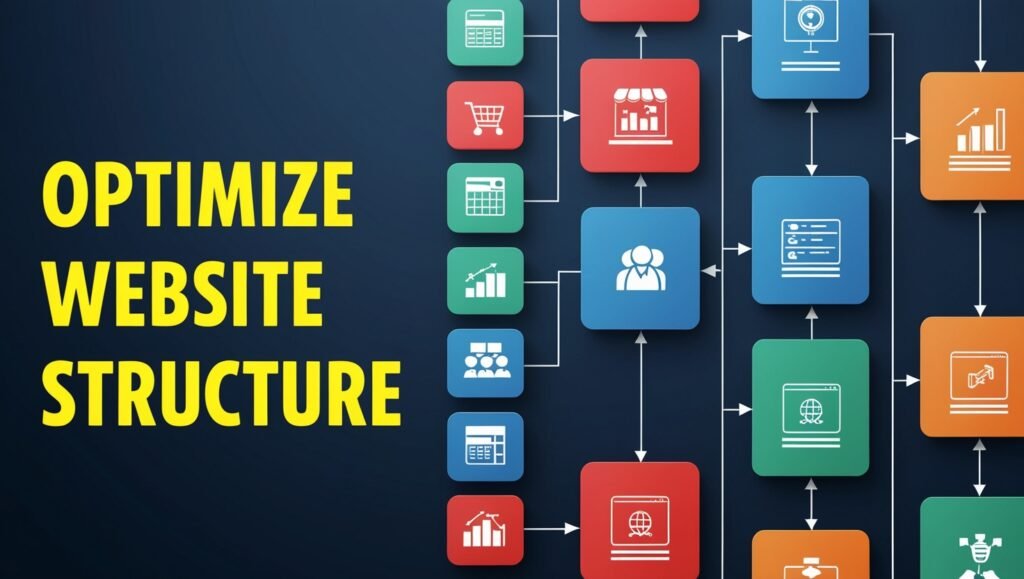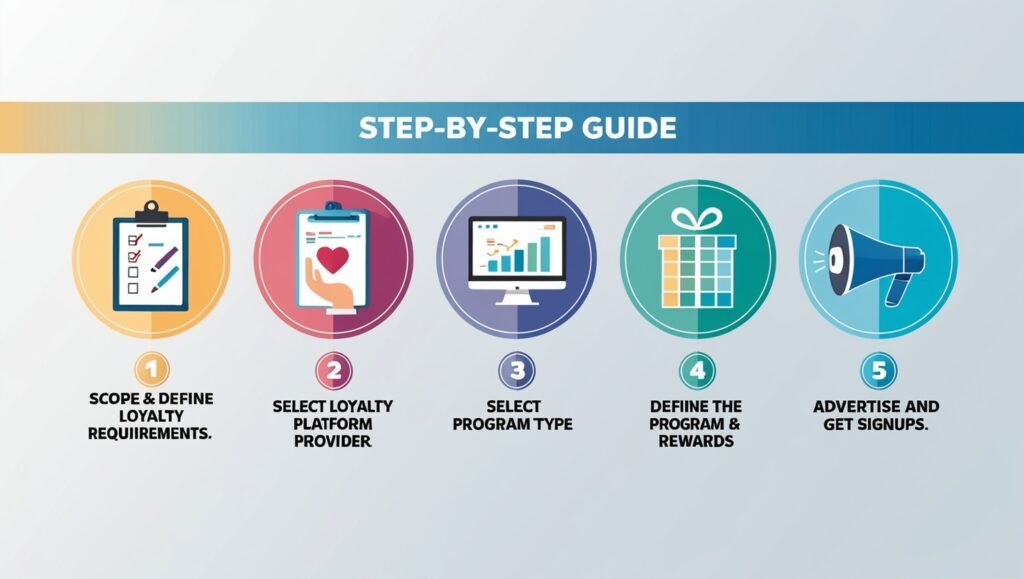
Introduction to Non-Social Media Marketing
In today’s digital world, many businesses focus solely on social media. But what if you could succeed without it? You might be surprised to learn that there are effective marketing strategies beyond Facebook and Instagram. This article will show you how to market your business without relying on social media.
You can connect with your audience in other ways. By understanding your customers, you can create a strong brand. You can also use tools like email marketing and SEO to reach more people. If you’re curious about how to build your business outside of social media, keep reading. You’ll discover practical strategies that can help you thrive.
Understanding Your Audience
To effectively market your business without social media, you need to understand your audience deeply. Knowing who your customers are is the foundation of any successful marketing strategy. Here’s how you can get started:
Define Your Target Demographics
First, identify the key demographics of your ideal customers. Consider factors like age, gender, income, location, and education level. This information helps you tailor your marketing efforts to meet their specific needs and preferences. For example, if you sell luxury products, you’ll want to target higher-income individuals.
Create Customer Personas
Next, develop customer personas. These are detailed profiles that represent different segments of your audience. You can create personas by conducting surveys or interviews with current customers. Ask questions about their interests, challenges, and buying behaviors. This will help you visualize who you are marketing to and craft messages that resonate.
Analyze Customer Pain Points
Understanding your audience also means knowing their pain points. What problems do they face that your product or service can solve? By addressing these issues in your marketing, you can show potential customers how you can improve their lives. For instance, if you run a web design business, your audience might struggle with poor website performance. Highlighting your solutions can attract their attention.
Gather Feedback
Don’t forget to listen to your customers. Collect feedback through reviews, surveys, or direct conversations. This will help you refine your understanding of their needs and preferences. Regularly checking in with your audience allows you to adjust your marketing strategies as their needs evolve.
Use Data Analytics
Leverage data analytics tools to gain insights into customer behavior. Tools like Google Analytics can show you how visitors interact with your website. You can see which pages they visit, how long they stay, and where they come from. This information helps you understand what works and what doesn’t, enabling you to optimize your marketing efforts.
Segment Your Audience
Finally, consider segmenting your audience for more targeted marketing. Instead of sending a one-size-fits-all message, tailor your content to different groups based on their interests and behaviors. This can lead to higher engagement rates and better conversion.
taking the time to understand your audience, you set the stage for effective marketing strategies that don’t rely on social media. When you know who you are speaking to and what they need, you can create messages that connect and inspire action. This foundation will guide your efforts as you explore alternative marketing channels.
Building a Strong Brand Identity

A strong brand identity is essential for any business, especially when you’re not using social media to reach your audience. Your brand is more than just a logo or a tagline; it’s how customers perceive you and what they feel when they think about your business. Here’s how to create a compelling brand identity.
Define Your Brand’s Mission and Values
Start by clearly defining your brand’s mission and core values. What is the purpose of your business? What principles guide your decisions? Communicating these elements helps customers understand what you stand for. For example, if your brand focuses on sustainability, make sure this commitment is evident in your messaging.
Develop a Unique Brand Voice
Your brand voice reflects your personality and tone. It should be consistent across all platforms, whether you’re writing website content, emails, or brochures. Decide if your tone will be friendly, professional, witty, or serious. This voice will help you connect with your audience and make your messaging more relatable.
Create Visual Elements
Visual elements are a key part of your brand identity. This includes your logo, color palette, typography, and imagery. Choose colors and designs that align with your brand’s personality. For instance, a tech company might use sleek, modern designs, while a wellness brand might opt for calming colors and organic shapes. Consistency in visual elements builds recognition and trust.
Craft a Compelling Brand Story
Tell a story that resonates with your audience. A compelling brand story can connect on an emotional level. Share the journey of how your business started, the challenges you faced, and how you’ve evolved. This narrative makes your brand relatable and helps customers feel more connected to you.
Ensure Consistency Across All Touchpoints
Consistency is crucial. Make sure your branding is uniform across all touchpoints, from your website to email communications and printed materials. This consistency reinforces your brand identity and helps customers recognize and remember you. Use the same logos, colors, and tone in all your communications.
Focus on Customer Experience
Your brand identity is also shaped by the experience you provide to customers. Pay attention to every interaction they have with your business, from customer service to product delivery. A positive experience fosters loyalty and encourages word-of-mouth referrals, which are especially important when not using social media.
Monitor Your Brand Reputation
Keep an eye on how your brand is perceived in the market. Use tools like Google Alerts to track mentions of your brand online. Encourage customers to leave reviews and feedback. This will help you address any issues and improve your brand image.
Adapt and Evolve
Finally, be open to adapting your brand identity as your business grows and changes. Your audience’s needs and preferences may shift, so regularly review and adjust your branding to stay relevant. This doesn’t mean losing your core identity but rather evolving it to meet the demands of your market.
Developing an SEO-Friendly Website
An SEO-friendly website is a vital tool for attracting organic traffic, especially when you’re not leveraging social media. Search engine optimization (SEO) ensures that your website ranks well on search engines like Google, making it easier for potential customers to find you. Here’s how to create an SEO-friendly website that drives traffic and conversions.
Choose the Right Domain Name
Your domain name is your online address, so choose one that reflects your brand and is easy to remember. It should be relevant to your business and contain keywords related to your services if possible. A simple, catchy domain name can enhance your brand’s visibility and make it easier for customers to find you.
Optimize Website Structure

A well-structured website is essential for both user experience and SEO. Organize your site into clear categories and subcategories. Use a simple navigation menu that allows visitors to find information easily. Include a sitemap to help search engines index your site effectively.
Use Relevant Keywords
Keywords are the terms people use to search for products or services. Research relevant keywords related to your business and incorporate them naturally into your website content. Focus on long-tail keywords (phrases with three or more words) that are more specific and less competitive. Use these keywords in headings, meta descriptions, and throughout your content.
Create High-Quality Content
Content is king when it comes to SEO. Create valuable, informative, and engaging content that addresses your audience’s needs. This could include blog posts, articles, guides, and FAQs. Regularly updating your content keeps your site fresh and encourages visitors to return. Aim for a mix of formats, including text, images, and videos, to enhance engagement.
Optimize Page Titles and Meta Descriptions
Each page on your website should have a unique title and meta description that includes relevant keywords. The title appears in search results and should be compelling enough to encourage clicks. The meta description provides a brief summary of the page’s content and can influence whether users choose to visit your site.
Improve Page Load Speed
Page load speed is a crucial factor for SEO and user experience. A slow-loading website can frustrate visitors and lead to high bounce rates. Optimize images, reduce server response times, and leverage browser caching to improve your site’s speed. Use tools like Google Page Speed Insights to analyze and enhance performance.
Make Your Website Mobile-Friendly
With more users accessing the web on mobile devices, having a responsive website is essential. Ensure that your site adjusts seamlessly to different screen sizes. Google prioritizes mobile-friendly sites in search rankings, so a responsive design can positively impact your SEO efforts.
Implement Internal and External Links
Linking is an important part of SEO. Use internal links to connect related content within your site, guiding users to explore more of what you offer. This improves site navigation and encourages visitors to spend more time on your site. Additionally, include external links to reputable sources, which can enhance your credibility and authority.
Utilize Alt Text for Images
Search engines can’t read images, so use alt text to describe each image on your site. This not only helps with SEO but also improves accessibility for visually impaired users. Include relevant keywords in your alt text, but keep it descriptive and concise.
Monitor and Analyze Performance

Once your website is optimized, regularly monitor its performance. Use tools like Google Analytics and Google Search Console to track traffic, user behavior, and search rankings. Analyze this data to identify areas for improvement and adjust your strategies accordingly.
developing an SEO-friendly website, you create a powerful marketing tool that attracts organic traffic without the need for social media. When your site ranks well on search engines, more potential customers can discover your business, leading to increased visibility and sales. Investing time in SEO not only enhances your online presence but also sets a strong foundation for your overall marketing strategy.
Leveraging Content Marketing
Content marketing is a powerful strategy for engaging your audience and driving traffic to your website without relying on social media. By creating valuable and relevant content, you can establish your brand as an authority in your field, attract potential customers, and foster long-term relationships. Here’s how to effectively leverage content marketing for your business.
Understand Your Audience’s Needs
Before creating content, take time to understand your audience’s needs and interests. Conduct research to identify common questions, challenges, and topics that resonate with your target demographic. Tools like Google Trends, keyword research tools, and customer surveys can help you gather insights. Creating content that directly addresses your audience’s pain points will make it more appealing and valuable.
Create a Content Strategy
Develop a content strategy that outlines your goals, target audience, and the types of content you plan to create. Decide on the formats you’ll use, such as blog posts, videos, infographics, or podcasts. Establish a content calendar to schedule your posts and maintain consistency. This structured approach ensures that you regularly produce high-quality content.
Produce High-Quality Blog Posts
Blogging is one of the most effective ways to engage your audience and improve SEO. Write informative and engaging blog posts that offer solutions to your audience’s problems. Aim for a mix of how-to guides, industry insights, case studies, and opinion pieces. Use relevant keywords naturally throughout your posts to enhance search engine visibility.
Utilize Visual Content
Incorporating visual elements can significantly enhance your content. Use images, infographics, and videos to break up text and make your content more engaging. Infographics are particularly effective for presenting complex information in a visually appealing way. Visuals not only grab attention but also increase the likelihood of sharing, leading to greater reach.
Implement Email Marketing
Email marketing is a powerful tool for content distribution. Use your website to collect email addresses and build a subscriber list. Send regular newsletters that highlight your latest blog posts, industry news, and exclusive content. Personalize your emails to resonate with different segments of your audience, and include strong calls to action that encourage readers to engage further with your content.
Develop Ebooks and Whitepapers
Creating in-depth resources like e-books and whitepapers can establish your authority in your industry. These longer-form content pieces provide detailed insights and valuable information that your audience may find useful. Offer these resources in exchange for email sign-ups, helping you grow your email list while providing value.
Collaborate with Guest Bloggers
Consider collaborating with guest bloggers or industry experts. Inviting others to contribute content to your site can bring fresh perspectives and new audiences. In return, you can write guest posts for their blogs, expanding your reach and establishing your expertise. Ensure that guest content aligns with your brand values and resonates with your audience.
Promote Your Content Strategically
Even without social media, you can still promote your content through various channels. Use email marketing, online forums, and industry-specific websites to share your blog posts and resources. Participate in relevant online communities and offer valuable insights, linking back to your content when appropriate. Networking with other businesses and influencers can also help amplify your reach.
Monitor and Analyze Performance
Regularly track the performance of your content to see what resonates with your audience. Use tools like Google Analytics to monitor page views, time spent on pages, and conversion rates. Analyzing this data will help you identify successful content types and topics, allowing you to refine your strategy moving forward.
Keep Content Fresh and Relevant

Finally, ensure your content remains up-to-date and relevant. Regularly update older blog posts with new information and insights. This not only helps with SEO but also shows your audience that you are knowledgeable about current trends and developments in your industry.
Utilizing Email Marketing
Email marketing is a highly effective tool for connecting with your audience, nurturing leads, and driving sales, all without the need for social media. It allows for direct communication and personalized messaging, making it a vital component of your marketing strategy. Here’s how to effectively utilize email marketing for your business.
Build Your Email List
The first step in email marketing is to build a strong email list. Start by creating sign-up forms on your website, ideally in multiple locations, such as the homepage, blog, and checkout pages. Offer incentives to encourage sign-ups, like exclusive discounts, free resources (e-books or guides), or access to webinars. Ensure your sign-up process is simple and user-friendly to maximize conversions.
Segment Your Audience
Once you have a list of subscribers, segment your audience based on various criteria such as demographics, interests, and behavior. Segmentation allows you to tailor your messaging to different groups, making your emails more relevant and effective. For example, you might create segments for new customers, returning customers, and inactive subscribers, each receiving targeted content based on their relationship with your brand.
Create Engaging Content
The content of your emails is crucial for maintaining subscriber interest and engagement. Craft compelling subject lines that grab attention and encourage opens. Inside the email, provide valuable content, such as informative articles, product recommendations, or special offers. Use a mix of formats, including text, images, and videos, to keep the content visually appealing and varied.
Personalize Your Emails
Personalization goes a long way in email marketing. Use the recipient’s name in the subject line and greeting to create a more personal connection. Tailor content based on past interactions, purchases, or preferences. For example, if a customer recently bought a specific product, send them follow-up emails with tips on how to use it or recommend complementary products.
Automate Your Campaigns
Automation can save you time and ensure consistent communication with your audience. Set up automated email sequences for various scenarios, such as welcome emails for new subscribers, abandoned cart reminders for potential customers, and follow-up emails after a purchase. Automation helps nurture leads through the customer journey without requiring constant manual effort.
Monitor and Analyze Performance
Regularly analyze the performance of your email campaigns to understand what works and what doesn’t. Track key metrics such as open rates, click-through rates, conversion rates, and unsubscribe rates. Tools like Mailchimp or Constant Contact provide analytics to help you assess the effectiveness of your campaigns. Use this data to refine your strategy and improve future emails.
Test and Optimize

Testing different elements of your emails can lead to better results. Conduct A/B testing on subject lines, content, layouts, and calls to action to see what resonates best with your audience. Make adjustments based on the feedback and performance data to continuously optimize your email marketing efforts.
Encourage Engagement
Foster engagement by encouraging subscribers to respond to your emails or participate in surveys. Ask for feedback on your content or products, and use this information to improve your offerings. Engaging your audience not only strengthens your relationship with them but also provides valuable insights for your business.
Ensure Compliance
Make sure to comply with email marketing regulations, such as the CAN-SPAM Act or GDPR, depending on your location and audience. Include an easy opt-out option in every email, respect privacy, and only send emails to those who have opted in. Maintaining compliance builds trust and credibility with your audience.
Re-Engage Inactive Subscribers
Don’t forget about subscribers who have become inactive. Create re-engagement campaigns to reach out to these individuals with special offers or surveys to understand their lack of engagement. This approach can help revive interest and potentially convert inactive subscribers back into active customers.
Exploring Digital Advertising
Digital advertising offers a powerful way to reach your target audience without relying on social media platforms. With various formats and targeting options available, digital ads can help you increase brand visibility, drive traffic to your website, and generate leads. Here’s how to effectively explore digital advertising for your business.
Understand Different Types of Digital Ads
Familiarise yourself with the various types of digital advertising available:
- Search Ads: These are text-based ads that appear on search engine results pages (SERPs) when users search for specific keywords. They are ideal for capturing intent-driven traffic, as they target users actively searching for products or services like yours.
- Display Ads: Display ads include visual elements (images, videos, or animations) that appear on websites and apps within the Google Display Network or other ad networks. These ads are great for brand awareness and retargeting campaigns.
- Remarketing Ads: Remarketing allows you to show ads to users who have previously visited your website. This helps keep your brand top-of-mind and encourages return visits, especially if they didn’t convert during their first interaction.
- Video Ads: Video ads can appear on platforms like YouTube or within other video content. They can be highly engaging and effective for storytelling, product demonstrations, and brand awareness.
- Native Ads: Native ads blend seamlessly with the content on a website, making them less intrusive. They often appear as sponsored articles or recommendations, providing valuable content while promoting your brand.
Set Clear Goals
Before launching your digital advertising campaigns, define clear goals. Are you looking to increase brand awareness, generate leads, or drive sales? Setting specific, measurable objectives will help you determine the right strategies, budgets, and key performance indicators (KPIs) to track success.
Choose the Right Advertising Platforms
Select the advertising platforms that align with your goals and target audience. Google Ads is excellent for search and display ads, while YouTube is ideal for video marketing. If you’re targeting specific niche audiences, consider platforms like LinkedIn for B2B marketing or Amazon for e-commerce products.
Develop Compelling Ad Creative
Your ad creative is crucial in capturing attention and driving action. For text-based ads, focus on crafting concise, engaging headlines and clear calls to action (CTAs). For display and video ads, ensure visuals are eye-catching and relevant to your message. Highlight unique selling points and benefits to encourage clicks.
Utilize Targeting Options
One of the main advantages of digital advertising is the ability to target specific audiences. Use demographic, geographic, and behavioral targeting to reach potential customers effectively. For instance, you can target users based on their location, interests, online behavior, or even remarketing to those who have interacted with your brand previously.
Set Your Budget
Determine your advertising budget based on your goals and the platforms you choose. Most digital advertising platforms operate on a pay-per-click (PPC) or cost-per-impression (CPM) basis. Start with a modest budget, test different campaigns, and optimize based on performance to maximize your return on investment (ROI).
Monitor and Optimize Campaigns
Regularly monitor the performance of your digital ads to assess their effectiveness. Use analytics tools provided by the advertising platforms to track metrics such as click-through rates (CTR), conversion rates, and cost per acquisition (CPA). Analyze which ads perform well and adjust your strategies accordingly, including tweaking ad copy, targeting options, or creative elements.
A/B Testing
Implement A/B testing to identify the most effective ad variations. Test different headlines, visuals, CTAs, and audience segments to see what resonates best with your target audience. Use the insights gained from these tests to refine your campaigns and improve overall performance.
Leverage Analytics and Insights

Utilize analytics to gain insights into user behavior and campaign performance. Understanding which ads drive the most traffic, conversions, and engagement can help you make informed decisions about future advertising efforts. Track your campaigns closely and adjust your strategies based on data-driven insights.
Stay Updated on Trends
Digital advertising is constantly evolving, with new technologies and trends emerging regularly. Stay informed about industry developments, platform updates, and changing consumer behavior. Adapt your strategies to leverage new opportunities and stay competitive in the digital landscape.
your marketing efforts without relying on social media. A well-executed digital advertising strategy allows you to reach your target audience, build brand awareness, and drive meaningful engagement—all essential components for growing your business in today’s competitive market.
Engaging in Thought Leadership
Thought leadership is an effective strategy for establishing your brand as an authority in your industry and building trust with your audience. By sharing valuable insights and knowledge, you can engage potential customers and foster meaningful relationships without relying on social media. Here’s how to develop and implement a thought leadership strategy for your business.
Identify Your Areas of Expertise
Start by identifying the topics where your expertise shines. Consider your industry knowledge, experiences, and the specific challenges your audience faces. Focus on areas where you can provide unique insights, solutions, or perspectives that differentiate you from competitors. This will help you create content that resonates with your target audience.
Create High-Quality Content
Producing high-quality content is crucial for positioning yourself as a thought leader. This can include:
- In-Depth Articles: Write long-form articles or blog posts that delve deeply into industry trends, best practices, or case studies. Use data, research, and real-world examples to support your points and provide actionable insights.
- Whitepapers and E-books: Develop comprehensive resources that address complex topics. These can serve as valuable lead magnets when offered in exchange for email sign-ups. Whitepapers and e-books allow you to showcase your expertise in a detailed manner.
- Webinars and Workshops: Host webinars or online workshops to share knowledge and engage directly with your audience. These interactive sessions allow for real-time questions and discussions, enhancing your credibility and connection with participants.
- Podcasts: Consider starting a podcast where you can share insights, interview industry experts, and discuss relevant topics. Podcasts are an engaging way to connect with your audience and establish your voice as a thought leader.
Network with Other Experts
Networking with other industry leaders and experts can enhance your credibility and expand your reach. Collaborate on projects, guest posts, or joint webinars. Engaging with established thought leaders can help you tap into their audience and elevate your brand’s profile.
Share Your Knowledge through Speaking Engagements
Participate in industry conferences, panels, and speaking engagements. Sharing your insights in front of live audiences positions you as an authority and allows you to connect with potential customers face-to-face. Ensure that your presentations are informative, engaging, and aligned with your brand’s message.
Leverage Email Marketing for Distribution
Use email marketing to distribute your thought leadership content. Create a dedicated newsletter or include thought leadership pieces in your regular communications. Share valuable insights, articles, or resources with your subscribers to keep them informed and engaged.
Optimize for SEO
Ensure your thought leadership content is optimized for search engines. Use relevant keywords, meta tags, and headings to increase visibility. High-quality content that ranks well in search results can attract organic traffic and establish your authority in the industry.
Foster Community Engagement
Encourage discussions and interactions around your content. Create opportunities for your audience to share their thoughts, ask questions, and provide feedback. This can be done through comments on your blog, dedicated forums, or Q&A sessions during webinars. Engaging with your audience fosters a sense of community and strengthens your position as a thought leader.
Stay Current with Industry Trends
To maintain your status as a thought leader, stay updated on industry trends and developments. Follow relevant publications, join professional organizations, and engage with industry news. Regularly updating your knowledge allows you to share timely insights that resonate with your audience.
Measure Your Impact
Regularly evaluate the impact of your thought leadership efforts. Use analytics to track engagement metrics such as page views, downloads, and email open rates. Assess how your thought leadership content influences brand awareness, lead generation, and customer trust. This data will help you refine your strategy over time.
Be Authentic and Transparent

Finally, authenticity is key to effective thought leadership. Share your experiences, challenges, and lessons learned. Being open and transparent fosters trust and credibility, making your audience more likely to connect with your message.
engaging in thought leadership, you can position your brand as a trusted authority in your industry. Sharing valuable insights and knowledge not only helps attract and retain customers but also establishes long-lasting relationships. As you implement this strategy, you create a strong foundation for your marketing efforts beyond social media, enhancing your overall brand reputation and impact.
Networking and Building Relationships
Networking and relationship-building are essential components of marketing without relying on social media. Establishing meaningful connections can lead to referrals, partnerships, and valuable opportunities for your business. Here’s how to effectively network and build relationships in a non-social media environment.
Attend Industry Events and Conferences
Participating in industry events, trade shows, and conferences provides excellent networking opportunities. These gatherings allow you to meet potential clients, partners, and industry leaders face-to-face. Prepare by researching attendees and preparing a brief introduction about your business. Bring business cards to share and follow up with new contacts after the event.
Join Professional Associations and Groups
Become a member of professional associations relevant to your industry. These organizations often host events, workshops, and networking opportunities that can help you connect with peers and potential clients. Engaging actively in these groups can enhance your credibility and provide access to valuable resources.
Utilize Local Networking Events
Look for local networking events, such as business meetups, chamber of commerce gatherings, or community workshops. These events often provide a more informal setting to meet other business owners and professionals. Be open to conversations, share your expertise, and listen to others to foster genuine connections.
Leverage Email Outreach
Email outreach can be a powerful tool for networking. Identify individuals or organizations you would like to connect with and send personalized emails introducing yourself and your business. Highlight common interests or goals and propose a meeting or a call to discuss potential collaboration or knowledge sharing.
Host Your Own Networking Events
Consider hosting your own networking events, workshops, or seminars. This positions you as a thought leader and creates an opportunity for others to connect with you and each other. Choose topics relevant to your audience and provide value through informative presentations or discussions.
Build Strategic Partnerships
Look for opportunities to form strategic partnerships with other businesses that complement your services. Collaborating with non-competing companies can expand your reach and offer mutual benefits. For example, if you run a web design agency, consider partnering with a digital marketing firm to provide comprehensive solutions to clients.
Engage in Community Involvement
Participate in local community events, charities, or volunteer opportunities. Being active in your community helps build goodwill and fosters relationships with local residents and businesses. This involvement can lead to word-of-mouth referrals and strengthen your reputation as a caring, community-focused business.
Use Networking Tools and Platforms
Explore online networking tools and platforms that facilitate connections without relying on traditional social media. Websites like LinkedIn, Meetup, and professional forums allow you to connect with industry professionals, share insights, and join discussions. Engage actively in these platforms to build your network.
Follow Up and Stay Connected
After making new connections, follow up promptly. Send a brief email or message expressing your pleasure in meeting them and suggesting ways to stay in touch. Regularly check in with your network to maintain relationships. Share relevant articles, invite them to events, or simply ask how they are doing. Consistent communication strengthens connections over time.
Offer Value to Your Network
Focus on providing value to your connections rather than solely seeking personal gain. Share insights, resources, and recommendations that can benefit them. Being a valuable resource fosters goodwill and encourages others to reciprocate, leading to stronger relationships.
Be Authentic and Approachable

Authenticity is key in networking. Be genuine in your interactions and show a sincere interest in others. Listen actively and engage in meaningful conversations. An approachable demeanor encourages others to connect with you and fosters trust in your relationships.
you can create a robust support system for your business that goes beyond social media. Meaningful connections can lead to referrals, collaborations, and valuable insights, ultimately enhancing your marketing efforts and contributing to your overall success. Investing time in building relationships not only helps grow your network but also enriches your personal and professional life.
Utilizing Industry Listings and Directories
Industry listings and directories are powerful tools for gaining visibility and attracting customers without relying on social media. These platforms can help you showcase your business, connect with potential clients, and enhance your credibility. Here’s how to effectively utilize industry listings and directories for your marketing strategy.
Understand the Value of Industry Listings
Industry listings and directories provide a centralized location where potential customers can find businesses related to specific sectors. Being listed in relevant directories can enhance your visibility and improve your chances of being discovered by customers actively searching for services or products you offer.
Identify Relevant Directories
Start by identifying the directories most relevant to your industry. Research both general directories (like Yelp or Yellow Pages) and niche-specific directories that cater to your field. Make a list of these directories and priorities them based on their reputation, user base, and relevance to your target audience.
Optimize Your Listing
Once you’ve chosen directories, optimize your business listing for maximum impact. Include essential information such as:
- Business Name: Ensure it matches your branding.
- Address and Phone Number: Provide accurate contact details.
- Website URL: Link to your official site for more information.
- Business Description: Write a clear and concise description that highlights your services and unique selling points. Use relevant keywords to improve searchability.
- Categories: Select appropriate categories that accurately represent your business. This helps users find you in relevant searches.
Collect and Showcase Customer Reviews
Customer reviews can significantly enhance your credibility. Encourage satisfied customers to leave positive reviews on your directory listings. Respond to all reviews, both positive and negative, to show that you value feedback and engage with your customers. This interaction builds trust and can influence potential clients when choosing a service provider.
Regularly Update Your Listings
Keep your directory listings up to date. Regularly review your information to ensure accuracy, especially when it comes to contact details, services offered, and business hours. Consistent updates signal to potential customers that your business is active and engaged.
Utilize Paid Features
Many directories offer paid features that can increase your visibility. Consider investing in premium listings, which often provide additional exposure or priority placement in search results. Evaluate the cost versus potential benefits to determine if paid features align with your marketing goals.
Leverage Niche-Specific Directories
In addition to general directories, seek out niche-specific directories tailored to your industry. These directories often attract a more targeted audience, increasing your chances of connecting with potential clients who are specifically interested in your offerings.
Promote Your Listings
Once your business is listed, promote these listings through other marketing channels. Include links to your directory profiles in your email signatures, newsletters, and on your website. This not only drives traffic to your listings but also reinforces your credibility by showcasing your presence in reputable directories.
Monitor Performance
Track the performance of your listings to gauge their effectiveness. Many directories provide analytics to see how often your listing is viewed and how many clicks it generates. Use this data to refine your strategy, identify successful directories, and adjust your efforts as needed.
Engage with the Directory Community
Some directories have community features, such as forums or Q&A sections. Engage with other businesses and users in these communities. Answer questions, share insights, and connect with other professionals. This involvement not only enhances your visibility but also positions you as an expert in your field.
Build Relationships with Directory Owners

If possible, build relationships with the owners or moderators of the directories where you are listed. They may provide additional exposure opportunities or insights into how to improve your listing’s effectiveness. Networking with directory owners can lead to valuable partnerships and increased visibility.
utilizing industry listings and directories, you can enhance your visibility, attract potential customers, and establish your credibility without relying on social media. A well-maintained presence in relevant directories can serve as a valuable marketing tool, helping you connect with a targeted audience and grow your business.
Emphasizing Word-of-Mouth Marketing
Word-of-mouth marketing (WOMM) is one of the most powerful and authentic forms of marketing available, especially when you’re not using social media. Positive recommendations from satisfied customers can significantly influence potential buyers. Here’s how to effectively leverage word-of-mouth marketing for your business.
Understand the Power of Word-of-Mouth
Word-of-mouth marketing relies on personal recommendations and referrals. People tend to trust the opinions of friends, family, and peers over traditional advertising. This organic form of marketing can lead to increased credibility and customer loyalty, as it fosters a sense of community around your brand.
Deliver Exceptional Customer Service
To generate positive word-of-mouth, you must first ensure your customers have a great experience with your business. Focus on delivering exceptional customer service at every touchpoint. Train your staff to be friendly, responsive, and helpful. Resolve issues promptly and go the extra mile to exceed customer expectations. Satisfied customers are more likely to share their positive experiences with others.
Encourage Customer Referrals
Implement a referral program to incentivize your existing customers to recommend your business to others. Offer discounts, rewards, or exclusive deals for customers who refer new clients. Make the process easy by providing referral links, templates, or promotional materials they can share with friends and family.
Create Shareable Experiences
Design experiences that are memorable and worth sharing. This could be a unique product launch event, a workshop, or an engaging in-store experience. Encourage attendees to share their experiences through word-of-mouth, and consider offering incentives for those who do. The more memorable the experience, the more likely customers are to talk about it.
Leverage Testimonials and Case Studies
Collect and showcase testimonials from satisfied customers. Positive reviews can be featured on your website, in marketing materials, or in newsletters. Create case studies that highlight how your product or service solved a problem for a client. These stories not only serve as powerful testimonials but also help potential customers see the value you offer.
Engage with Your Customers Offline
Since you’re not relying on social media, find other ways to engage with your customers directly. Host events, workshops, or community gatherings that allow you to connect with your audience in person. Building personal relationships fosters trust and encourages customers to share their positive experiences with others.
Encourage Online Reviews
Even without social media, online reviews on platforms like Google, Yelp, and industry-specific sites are crucial for word-of-mouth marketing. Encourage happy customers to leave reviews on these platforms. Make it easy for them by providing links or instructions. Monitor your reviews and respond to them, showing appreciation for positive feedback and addressing any concerns raised.
Create a Loyalty Program

Implement a loyalty program that rewards repeat customers. This encourages ongoing engagement and creates a sense of belonging. Loyal customers are more likely to spread the word about their experiences and recommend your business to others.
Utilize Influencers and Brand Advocates
Identify local influencers or brand advocates who resonate with your target audience. These individuals can help amplify your message through personal recommendations. Collaborate with them to promote your business through events, testimonials, or reviews, ensuring their endorsements feel authentic and aligned with their audience’s interests.
Track and Measure Word-of-Mouth Impact
Although tracking word-of-mouth can be challenging, it’s important to gauge its impact. Use customer surveys to ask how they heard about your business. Analyze patterns in customer acquisition to see if referrals are a significant source of new clients. This data will help you understand the effectiveness of your word-of-mouth marketing efforts.
Foster a Community Around Your Brand
Create a sense of community around your brand by engaging with customers in meaningful ways. Host forums, workshops, or local meet-ups that allow customers to connect with each other and share their experiences. Building a community fosters loyalty and encourages members to advocate for your brand within their networks.
word-of-mouth marketing, you can tap into one of the most effective forms of promotion available. Happy customers will naturally share their experiences, creating a powerful network of recommendations that can drive growth and enhance your reputation. Focusing on exceptional service, community engagement, and customer satisfaction will cultivate a loyal customer base that actively promotes your business, even without social media.
Implementing Email Marketing Strategies
Email marketing remains a highly effective strategy for reaching your audience without relying on social media. It allows you to communicate directly with customers, share valuable content, and nurture relationships over time. Here’s how to implement successful email marketing strategies for your business.
Build a Quality Email List
Start by building a high-quality email list. Focus on gathering emails from individuals genuinely interested in your business. Here are some effective methods to grow your list:
- Website Sign-Up Forms: Include sign-up forms on your website, blog, and landing pages. Make it easy for visitors to subscribe by offering a clear value proposition, such as exclusive content or discounts.
- Lead Magnets: Create lead magnets like e-books, whitepapers, or downloadable resources that require an email subscription to access. This incentivizes visitors to provide their email addresses.
- In-Person Events: Collect email addresses at events, workshops, or trade shows. Provide a sign-up sheet or digital form for attendees to subscribe to your mailing list.
Segment Your Audience
Segmentation allows you to tailor your email campaigns to specific groups within your audience. This ensures that your content is relevant and personalized. Consider segmenting your list based on criteria such as:
- Demographics: Age, gender, location, and other demographic factors.
- Purchase Behavior: Segment based on past purchases or engagement levels.
- Interests: Group subscribers according to their expressed interests or preferences.
By tailoring your messages to each segment, you increase the likelihood of engagement and conversions.
Craft Compelling Content
Your email content should provide value and resonate with your audience. Consider the following tips:
- Personalization: Use the recipient’s name and personalize content based on their interests or past interactions. Personalized emails tend to have higher open and click-through rates.
- Clear and Engaging Subject Lines: Write subject lines that grab attention and clearly convey the email’s purpose. Keep them concise and relevant to encourage openings.
- Valuable Information: Share valuable content, such as industry insights, tips, promotions, or news about your business. Aim to educate or entertain your audience rather than just sell to them.
Use a Consistent Sending Schedule
Establish a consistent email sending schedule to keep your audience engaged. Whether it’s weekly, bi-weekly, or monthly, consistency helps subscribers know when to expect your emails. Be mindful not to overwhelm them with too many messages, which could lead to unsubscribes.
Optimize for Mobile Devices

Ensure your emails are mobile-friendly, as many users access their emails on smartphones or tablets. Use responsive design techniques so that your emails look great on all devices. Keep your content concise and use clear calls to action (CTAs) that are easy to tap.
Include Strong Calls to Action
Every email should have a clear call to action that guides recipients on what to do next. Whether it’s visiting your website, signing up for an event, or making a purchase, your CTA should be prominent and compelling. Use action-oriented language and ensure the link or button stands out visually.
Monitor and Analyze Performance
Regularly monitor your email marketing performance to assess effectiveness. Key metrics to track include:
- Open Rates: Indicates how many recipients opened your email.
- Click-Through Rates (CTR): Shows the percentage of recipients who clicked on links within the email.
- Conversion Rates: Measures how many recipients took the desired action, such as making a purchase.
Use this data to refine your strategies, test different content, and identify what resonates most with your audience.
A/B Testing
Implement A/B testing to optimize your email campaigns. Test different subject lines, content formats, or CTAs to see what performs better. By experimenting with various elements, you can improve engagement and conversion rates over time.
Encourage Engagement and Feedback
Encourage your subscribers to engage with your emails by asking questions or inviting feedback. Include surveys or polls to gather insights about their preferences or experiences. This engagement fosters a two-way communication channel and helps you better understand your audience.
Comply with Regulations
Ensure your email marketing complies with regulations such as the CAN-SPAM Act or GDPR. Provide clear unsubscribe options in every email and respect privacy by protecting your subscribers’ information. Compliance builds trust and protects your brand’s reputation.
effective email marketing strategies, you can create a direct line of communication with your audience. Email marketing allows you to nurture relationships, deliver valuable content, and drive conversions, all without relying on social media. With a well-planned approach, you can turn your email list into a powerful marketing asset that supports your business goals.
Exploring Traditional Marketing Tactics
While digital marketing dominates today’s landscape, traditional marketing tactics remain highly effective, especially for businesses looking to engage customers without relying on social media. These strategies can help you build brand awareness, reach local audiences, and establish credibility. Here’s how to effectively implement traditional marketing tactics.
Print Advertising
Print advertising remains a valuable way to reach your target audience. Consider the following formats:
- Newspapers and Magazines: Advertise in local newspapers or industry-specific magazines that your target audience reads. Craft compelling ads that highlight your unique offerings and include a strong call to action.
- Brochures and Flyers: Design visually appealing brochures and flyers that showcase your products or services. Distribute them in high-traffic areas, at events, or directly to potential clients.
- Postcards: Send direct mail postcards to your target audience. Personalize them with special offers or information about upcoming events to increase engagement.
Direct Mail Campaigns
Direct mail can be an effective way to reach potential customers. Develop a targeted mailing list and create informative or promotional materials to send directly to their homes or businesses. Include personalized messages and clear calls to action to encourage responses.
Networking and Community Involvement

Engaging with your community can significantly enhance your brand visibility. Participate in local events, sponsor community activities, or collaborate with other businesses to create joint promotions. Building relationships within your community fosters trust and can lead to valuable word-of-mouth referrals.
Trade Shows and Exhibitions
Participating in trade shows or exhibitions allows you to showcase your products or services to a targeted audience. Prepare an attractive booth with promotional materials and engage attendees through demonstrations or presentations. Collect leads by offering giveaways or incentives for attendees who provide their contact information.
Cold Calling and Personal Outreach
Cold calling can still be an effective strategy, especially in B2B marketing. Develop a list of potential clients and reach out with a personalized pitch. Focus on how your product or service can solve their specific problems. Although challenging, building rapport over the phone can lead to valuable business relationships.
Networking Events and Meetups
Attend local networking events, meetups, or industry conferences to connect with potential customers and partners. Prepare an elevator pitch about your business and be ready to share your expertise. Collect business cards and follow up after the event to nurture these connections.
Community Workshops and Seminars
Host workshops or seminars that provide valuable information relevant to your audience. This positions you as an authority in your field and allows you to connect with potential customers in a meaningful way. Ensure your sessions are informative and engaging, and provide attendees with actionable takeaways.
Sponsorships
Consider sponsoring local events, sports teams, or community initiatives. Sponsorships can enhance your brand visibility and associate your business with positive community efforts. Ensure your branding is prominently displayed at events and in promotional materials.
Referral Programs
Implement a referral program that encourages existing customers to refer new clients. Offer incentives, such as discounts or rewards, to motivate your current customers to spread the word about your business. A strong referral program capitalizes on the trust established between your customers and their networks.
Vehicle Branding
Use vehicle branding to promote your business on the go. Wrapping your company vehicle with your logo and branding message can turn everyday commutes into marketing opportunities. It provides visibility and can attract attention wherever you go.
Outdoor Advertising
Consider outdoor advertising options such as billboards, posters, or transit ads. Choose high-traffic locations to maximize visibility. Ensure your message is clear and visually engaging to capture the attention of passersby.
Public Relations (PR)
Utilize PR tactics to generate media coverage and build your brand’s reputation. Write press releases to announce significant events, product launches, or milestones. Build relationships with local journalists and bloggers to increase the likelihood of coverage.
Track and Measure Results

While traditional marketing may be harder to track than digital efforts, it’s essential to evaluate your results. Use unique phone numbers, promo codes, or landing pages to measure the effectiveness of your campaigns. Analyzing your results can help refine your strategy and optimize future efforts.
traditional marketing tactics, you can effectively reach your audience and build brand awareness without relying on social media. These methods allow you to connect with customers in meaningful ways and foster lasting relationships, ultimately contributing to your business’s success.
Building Brand Partnerships and Collaborations
Collaborating with other brands can be a powerful way to enhance your marketing efforts without relying on social media. Strategic partnerships allow you to leverage each other’s strengths, reach new audiences, and create unique offerings. Here’s how to effectively build brand partnerships and collaborations.
Identify Potential Partners
Start by identifying potential brands that align with your values, target audience, and goals. Look for companies that complement your offerings rather than directly compete with you. Consider businesses within your industry or related sectors that share a similar customer base.
Establish Clear Objectives
Before entering a partnership, establish clear objectives for what you want to achieve. Whether it’s increasing brand awareness, driving sales, or enhancing customer experience, having specific goals will guide your collaboration and help measure its success.
Propose Win-Win Scenarios
When approaching potential partners, focus on creating win-win scenarios. Outline how the partnership can benefit both parties. Whether it’s sharing resources, cross-promoting products, or co-hosting events, ensure that both brands gain value from the collaboration.
Develop Joint Marketing Initiatives
Collaborative marketing initiatives can amplify your reach and impact. Consider the following strategies:
- Co-Hosted Events: Organize joint workshops, webinars, or community events that showcase both brands. This provides an opportunity to engage with both audiences and share expertise.
- Bundled Offers: Create bundled packages that combine products or services from both brands. This adds value for customers and encourages them to try offerings from both companies.
- Content Collaborations: Partner to create co-branded content, such as blog posts, videos, or podcasts. This not only enhances your content marketing efforts but also exposes both brands to new audiences.
Cross-Promote Each Other
Leverage each other’s platforms to cross-promote your brands. This can include featuring each other’s products in newsletters, email campaigns, or website promotions. By sharing each other’s content, you can reach a wider audience and build credibility through association.
Attend Trade Shows Together
If applicable, consider sharing a booth at trade shows or industry conferences. This not only reduces costs but also allows both brands to benefit from increased foot traffic. Use the opportunity to engage attendees, showcase products, and collect leads for both businesses.
Share Resources and Expertise
Collaborating often allows for the sharing of resources and expertise. This could involve sharing marketing budgets for joint campaigns or pooling knowledge to develop new products or services. Collaborative efforts can enhance creativity and lead to innovative solutions.
Establish Clear Communication
Effective communication is key to a successful partnership. Set up regular check-ins to discuss progress, address challenges, and brainstorm new ideas. Maintaining open lines of communication helps build trust and ensures both parties remain aligned with their objectives.
Monitor and Measure Success
Define key performance indicators (KPIs) to measure the success of the partnership. This could include metrics such as increased sales, new customer acquisitions, or heightened brand awareness. Regularly review these metrics to assess the effectiveness of your collaboration and make adjustments as needed.
Nurture Long-Term Relationships

Building strong partnerships can lead to long-term collaborations. Nurture these relationships by continuing to support each other’s initiatives, providing feedback, and celebrating successes together. Long-lasting partnerships can create a loyal customer base and enhance brand reputation.
Stay Flexible and Adaptable
Every partnership will encounter challenges and changes. Stay flexible and adaptable to navigate any hurdles that arise. Be open to feedback and willing to adjust your strategies to ensure the partnership remains beneficial for both parties.
building brand partnerships and collaborations, you can enhance your marketing efforts and reach new audiences without relying on social media. These strategic alliances provide opportunities for shared growth, innovation, and community engagement, ultimately contributing to the success of both brands involved.
Leveraging Podcasts and Audio Content
Podcasts and audio content have surged in popularity and present a unique opportunity to market your business without relying on social media. They allow you to share valuable information, connect with your audience, and establish your authority in your industry. Here’s how to effectively leverage podcasts and audio content for your marketing strategy.
Understand the Benefits of Podcasting
Podcasts provide an engaging way to connect with your audience. They can help you:
- Build Authority: Sharing your expertise through podcasts positions you as a thought leader in your field. Listeners are more likely to trust and engage with brands that demonstrate knowledge.
- Enhance Engagement: Audio content allows for deeper engagement, as listeners often feel a personal connection to the host. This can lead to increased loyalty and trust.
- Reach New Audiences: Podcasts have a broad reach and can attract listeners who may not be familiar with your brand. By appearing on or hosting podcasts, you can tap into new markets.
Start Your Own Podcast
Creating your own podcast is a fantastic way to engage with your audience directly. Here’s how to get started:
- Choose a Niche: Focus on a specific topic that aligns with your brand and interests your target audience. This could be industry insights, interviews with experts, or discussions on relevant trends.
- Plan Your Content: Develop a content calendar that outlines episode topics, guest speakers, and release schedules. Consistency is key, so decide how often you’ll publish new episodes (weekly, bi-weekly, etc.).
- Invest in Quality Equipment: Good audio quality is essential for listener retention. Invest in a decent microphone, headphones, and recording software. There are many user-friendly options available, even for beginners.
- Edit and Polish: Edit your recordings to eliminate mistakes and enhance sound quality. There are various editing software options available, both free and paid, that can help you produce a polished final product.
Collaborate with Other Podcasters
Partnering with established podcasters can significantly boost your visibility. Consider these strategies:
- Guest Appearances: Reach out to existing podcasts that align with your brand and offer to be a guest. Share your expertise and insights on relevant topics. This can expose you to a new audience and drive traffic back to your brand.
- Cross-Promotions: Engage in cross-promotion with other podcasters. You can promote each other’s shows to your respective audiences, which can lead to increased listeners and subscribers.
Create Audio Content for Your Audience
In addition to podcasts, consider creating other forms of audio content that can benefit your audience:
- Audiobooks: If you have written content, consider creating an audiobook version. This allows people to consume your material on the go.
- Webinars and Workshops: Record audio from webinars or workshops and offer them as downloadable content. This provides value to those who couldn’t attend live.
- Voice Notes and Tips: Share short audio tips or insights via email newsletters. This adds a personal touch and keeps your audience engaged.
Promote Your Podcast and Audio Content
Even without social media, you can promote your podcast through various channels:
- Email Marketing: Share new episodes with your email subscribers. Include links to the episodes, summaries, and any relevant show notes.
- Website Integration: Embed your podcast episodes on your website or create a dedicated podcast page. This provides a centralized location for visitors to access your content.
- Networking Events: Promote your podcast during networking events, workshops, or speaking engagements. Share the benefits of listening and encourage attendees to check it out.
Engage with Your Audience
Encourage listener engagement by inviting feedback, questions, and topic suggestions. Consider creating a segment in your podcast where you answer listener questions. This interaction fosters a sense of community and keeps your audience invested in your content.
Monitor Performance and Gather Feedback
Track the performance of your podcast by analyzing download numbers, listener demographics, and feedback. Use metrics from your podcast hosting platform to understand which episodes resonate most with your audience. This data can guide future content and improve your overall strategy.
Adapt and Evolve

As you gather feedback and analyze performance, be willing to adapt your content and approach. Experiment with different formats, topics, or guest speakers to see what resonates most. Staying flexible allows you to continually improve and better serve your audience.
leveraging podcasts and audio content, you can effectively market your business without relying on social media. This medium provides a platform to share your expertise, connect with your audience, and build lasting relationships, ultimately enhancing your brand’s visibility and credibility.
Utilizing Offline Events and Workshops
Offline events and workshops are powerful marketing strategies that can help you engage with your audience directly and build strong relationships without the use of social media. These in-person interactions provide a unique opportunity to showcase your expertise, connect with potential customers, and foster community engagement. Here’s how to effectively utilize offline events and workshops as part of your marketing strategy.
Define Your Goals
Before organizing an event, clearly define your goals. What do you want to achieve? Common objectives include:
- Building Brand Awareness: Increase visibility in your community or industry.
- Generating Leads: Collect contact information from attendees who may be interested in your products or services.
- Educating Your Audience: Share valuable insights or skills that relate to your business.
Having clear goals will guide your planning process and help you measure the success of your event.
Identify Your Target Audience
Understand who your target audience is and tailor your event to meet their needs. Consider demographics such as age, profession, and interests. This will inform the type of event you organize, the topics you cover, and the location you choose.
Choose the Right Format
Select a format that aligns with your goals and audience preferences. Some popular options include:
- Workshops: Hands-on sessions where participants can learn skills or techniques related to your field. These can range from a few hours to a full day.
- Seminars: Informative presentations or talks that educate attendees on specific topics. This format can include guest speakers or panel discussions.
- Networking Events: Opportunities for attendees to meet and connect with others in their industry. These can be structured with icebreakers or informal gatherings.
- Trade Shows: Participating in or hosting a trade show allows you to showcase your products or services to a larger audience.
Select an Appropriate Venue
Choose a venue that suits your event type and can comfortably accommodate your audience. Consider factors such as location, accessibility, and amenities. Ensure the venue aligns with your brand image and provides a welcoming atmosphere for attendees.
Promote Your Event
Even without social media, you can effectively promote your offline events through various channels:
- Email Marketing: Send invitations and reminders to your email list. Highlight the benefits of attending and provide a clear call to action for registration.
- Local Advertising: Use local newspapers, community bulletins, or radio stations to advertise your event. Target platforms that your audience is likely to engage with.
- Networking: Reach out to industry contacts, local businesses, and community organizations to help spread the word. Encourage them to share information about your event with their networks.
- Flyers and Posters: Create visually appealing flyers or posters to display in local businesses, community centers, and relevant venues.
Engage Attendees During the Event
Make your event interactive and engaging to keep attendees interested. Here are some strategies:
- Hands-On Activities: Incorporate practical exercises or demonstrations that allow participants to actively engage with the content.
- Q&A Sessions: Allow time for attendees to ask questions and interact with speakers. This encourages participation and deepens their understanding.
- Networking Opportunities: Provide structured networking activities to help attendees connect with each other. This fosters relationships and can lead to valuable partnerships.
Gather Feedback
Collect feedback from attendees to assess the success of your event and identify areas for improvement. Consider using:
- Surveys: Distribute surveys at the end of the event to gather opinions on content, speakers, and overall experience.
- Follow-Up Emails: Send thank-you emails that include a feedback request. This shows appreciation and provides an opportunity for attendees to share their thoughts.
Nurture Relationships After the Event
Continue the engagement by nurturing the relationships you’ve built during the event. Here are some ways to do this:
- Follow-Up Communication: Send follow-up emails to attendees, thanking them for their participation and providing additional resources or information related to the event.
- Share Content: If applicable, share recordings, slides, or materials from the event to provide added value to attendees.
- Invite Them to Future Events: Keep your audience engaged by inviting them to future workshops, seminars, or networking events.
Evaluate Success

After the event, evaluate its success against the goals you set at the beginning. Analyze attendance numbers, feedback received, and any leads generated. Use this information to refine your approach for future events.
utilizing offline events and workshops, you can create meaningful connections with your audience, build your brand, and enhance customer loyalty—all without relying on social media. These face-to-face interactions foster trust and community engagement, ultimately contributing to your business’s long-term success.
Implementing a Customer Referral Program
A customer referral program is a powerful marketing strategy that can help you grow your business without relying on social media. By encouraging your existing customers to refer new clients, you can leverage word-of-mouth marketing and build a loyal customer base. Here’s how to effectively implement a referral program.
Understand the Value of Referrals
Before diving into the logistics, recognize why referrals are valuable:
- Trust: People are more likely to trust recommendations from friends and family over traditional advertising. A referral carries the weight of personal endorsement.
- Cost-Effective: Referral programs typically cost less than other marketing strategies. You reward existing customers for their loyalty instead of spending on ads.
- Quality Leads: Referrals often convert at higher rates because they come with built-in trust. New customers referred by existing ones are more likely to make a purchase.
Define Your Goals
Set clear goals for your referral program. What do you want to achieve? Common objectives might include:
- Increasing Customer Base: Aim to attract a specific number of new customers through referrals.
- Boosting Sales: Focus on driving more sales by converting referrals into paying customers.
- Enhancing Customer Engagement: Foster deeper relationships with existing customers by involving them in the growth of your business.
Having defined goals will help you design an effective program and measure its success.
Design Your Referral Program
Consider the following elements when designing your referral program:
- Incentives: Decide on the rewards for both the referrer and the new customer. Popular options include discounts, cash rewards, free products or services, or loyalty points. Ensure the incentives are enticing enough to motivate participation.
- Program Structure: Determine how the program will work. Will customers receive rewards for every successful referral, or will there be tiered rewards for multiple referrals? Create a clear and straightforward structure.
- Eligibility Criteria: Define who is eligible to participate in the referral program. This could include existing customers, subscribers, or members of your loyalty program.
Promote Your Referral Program
Even without social media, you can effectively promote your referral program through various channels:
- Email Marketing: Send dedicated emails to your existing customers introducing the referral program. Highlight the benefits and how they can participate. Include clear calls to action and links for easy access.
- Website Integration: Create a dedicated page on your website for the referral program. Include detailed information about the rewards, how it works, and a simple sign-up process.
- In-Store Promotion: If you have a physical location, promote the referral program through signage, flyers, or during customer interactions. Train your staff to mention the program during conversations with customers.
Make Participation Easy
Simplify the process for customers to refer others. Consider these approaches:
- Unique Referral Links: Provide each participant with a unique referral link they can share with their network. This allows for easy tracking of referrals and rewards.
- Referral Forms: Create a simple form on your website where customers can input their referrals’ information. This streamlines the process and makes it easy for them to participate.
- Automated Tracking: Use referral software or tools that automate tracking and reward distribution. This minimizes the administrative burden and ensures a smooth experience for participants.
Communicate with Participants
Keep your participants informed and engaged throughout the referral process:
- Regular Updates: Send updates on the status of their referrals and any rewards they’ve earned. This encourages continued participation and shows appreciation.
- Highlight Success Stories: Share success stories or testimonials from customers who have benefited from the referral program. This can motivate others to participate.
Evaluate and Adjust
After launching your referral program, regularly evaluate its performance against the goals you set. Consider the following metrics:
- Participation Rates: Track how many existing customers are participating in the program.
- Conversion Rates: Analyze how many referrals convert into paying customers.
- Customer Feedback: Collect feedback from participants to identify any challenges or areas for improvement.
Based on your analysis, make necessary adjustments to improve the program’s effectiveness. This could include enhancing rewards, simplifying processes, or increasing promotional efforts.
Foster a Referral Culture
Encourage a culture of referrals within your business. Make sure your customers feel valued and appreciated for their loyalty. Regularly highlight the benefits of referring friends and family, and express gratitude to those who participate.
implementing a customer referral program, you can effectively grow your business without relying on social media. This strategy harnesses the power of word-of-mouth marketing, builds strong relationships with existing customers, and attracts new clients—all while creating a loyal community around your brand.
Engaging in Community Involvement

Community involvement is an impactful way to market your business without relying on social media. By actively participating in your local community, you can build brand awareness, foster relationships, and create a positive reputation. Here’s how to effectively engage in community involvement as part of your marketing strategy.
Understand the Benefits of Community Engagement
Participating in community activities offers several benefits:
- Builds Trust and Credibility: Being visible and active in your community helps establish your business as a trusted local entity. People tend to support businesses that contribute positively to their surroundings.
- Enhances Brand Recognition: Community involvement increases your brand’s visibility. The more people see you participating, the more likely they are to remember your business.
- Creates Networking Opportunities: Engaging in local events allows you to connect with potential customers, partners, and other businesses, leading to beneficial relationships.
Identify Your Community’s Needs
Start by researching and identifying the needs and interests of your local community. This could include:
- Supporting Local Causes: Find out what issues are important to your community. This could be anything from environmental conservation to education, health care, or social justice.
- Connecting with Local Organizations: Reach out to community organizations, schools, and nonprofits to understand how you can support their missions. Look for partnership opportunities that align with your values.
Choose Your Engagement Strategies
Select the best methods to get involved based on your community’s needs and your business goals. Here are some effective strategies:
- Sponsorships: Consider sponsoring local events, such as sports teams, fairs, or festivals. This not only boosts your visibility but also shows your commitment to supporting community activities.
- Volunteering: Organize volunteer days for your employees to participate in local projects. This could involve helping at food banks, participating in park clean-ups, or assisting with local charity events.
- Hosting Workshops or Events: Use your expertise to offer free workshops or educational sessions in your community. This positions you as a valuable resource and helps establish connections with potential customers.
- Supporting Local Causes: Make donations or provide resources to local nonprofits and charities. This not only helps those in need but also builds goodwill for your brand.
Collaborate with Other Local Businesses
Engage in partnerships with other local businesses to amplify your community involvement. Consider:
- Joint Events: Collaborate with other businesses to host events, such as community fairs, market days, or workshops. This allows you to pool resources and reach a larger audience.
- Cross-Promotions: Work with other businesses to promote each other’s community efforts. This can enhance your visibility and demonstrate a strong local network.
Leverage Local Media
Get the word out about your community involvement through local media outlets. Here’s how:
- Press Releases: Write press releases to announce your community activities, sponsorships, or events. Local newspapers, radio stations, and community bulletins often welcome such announcements.
- Community Newsletters: Submit articles or updates to local newsletters or community websites. Highlight your contributions and invite residents to participate in upcoming events.
Engage with Your Audience
Make sure to communicate your community involvement to your existing customers and potential clients:
- Email Newsletters: Share updates on your community activities through regular email newsletters. Include information about upcoming events and how your audience can get involved.
- In-Store Promotions: Use your physical location to promote your community efforts. Display posters, flyers, or other materials that highlight your involvement.
Measure Your Impact
To ensure your community involvement is effective, measure its impact:
- Gather Feedback: After events or activities, collect feedback from participants to understand their experiences. This can help you improve future initiatives.
- Track Engagement: Monitor the response from the community and measure increases in brand recognition, customer inquiries, and sales that result from your involvement.
- Evaluate Relationships: Assess how your community engagement has strengthened relationships with local customers and businesses. Look for opportunities to further develop these connections.
Foster a Culture of Giving
Encourage your team and customers to get involved in community initiatives. Create a culture of giving within your organization by:
- Recognizing Employee Involvement: Acknowledge employees who participate in community activities. This could include awards, shout-outs, or incorporating community service into company values.
- Encouraging Customer Participation: Invite your customers to join your community efforts, whether by volunteering, attending events, or donating to local causes.








